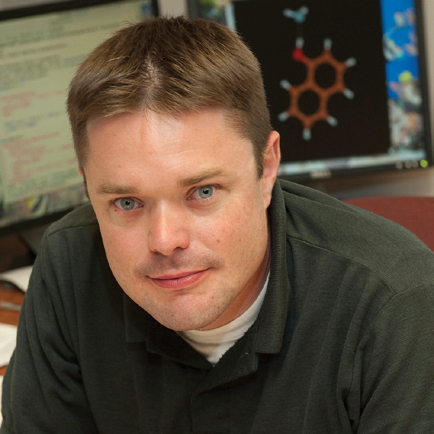2009 Research Highlights | Research Demos | Our SC09 Partners | SC09 Videos


Project lead:
John M. Herbert, Ph.D., The Ohio State University
Research title: Development and testing of electronic structure methods for simulating excited electronic states of DNA
Funding sources:
The Ohio State University, National Science Foundation (CAREER award)
When other chemists reach the limits of what they can learn from experiments in the laboratory, Ohio State's John Herbert accesses the Ohio Supercomputer Center's IBM Cluster 1350 system to help fill in the rest of the story with computer modeling and simulation.
"Our group, along with several others throughout the world, are co-developers of a quantum chemistry software package called 'Q-Chem,'" said the assistant professor of chemistry.
"The target audience for this software consists not only of computational chemists, but also - in fact, primarily - experimental chemists who wish to do some calculations in support of their experimental work. Our job is to develop and implement the theories and computational models that are then, we hope, widely adopted and used by the chemistry community."
President Barack Obama recently recognized Herbert with a Presidential Early Career Award for Scientists and Engineers for "his work in developing novel algorithms for the simulation of electronically excited states consisting of hundreds of atoms and for applying these techniques to the characterization of photochemical processes in DNA, and for his work in developing openended research projects to be integrated into undergraduate teaching laboratories."
For more information, see: http://web.chemistry.ohio-state.edu/~herbert/